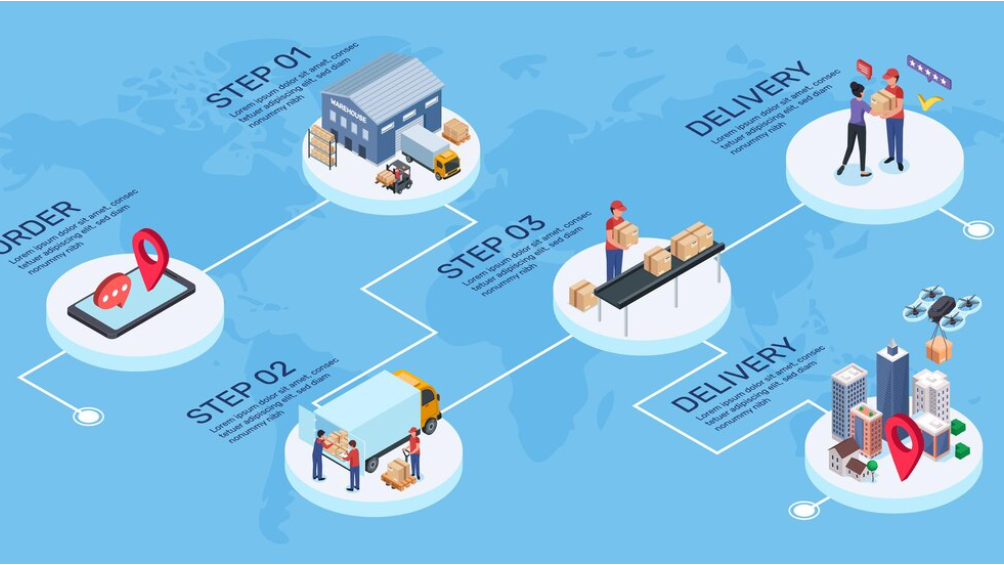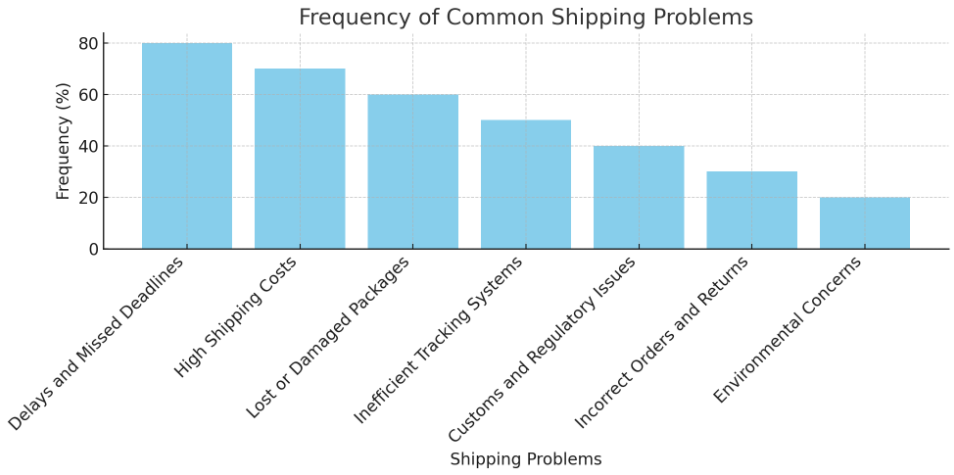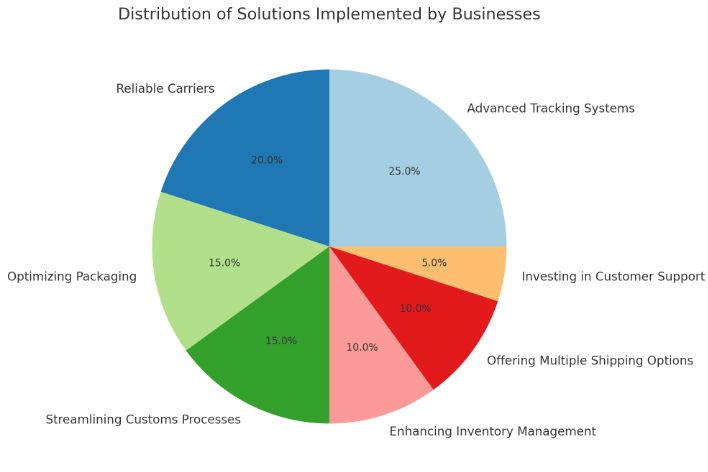“Lost or delayed shipments are more than just an inconvenience; they are a breach of trust.”
-Anonymous
What is Shipping?
Shipping and fulfillment are essential parts of running a successful E-Commerce business. They affect how happy your customers are and how smoothly your business runs. Yet, facing shipping problems can cause big issues, making customers unhappy and losing your business. In this post, we’ll look at common shipping problems and share 7 simple solutions to help you fix these issues and improve your shipping process.
Example to Illustrate Shipping:
Imagine you run an online store that sells handmade candles. Here’s how shipping works in this context:
1. Order Placement: A customer visits your online store and orders a candle.

2. Order Processing: You receive the order, prepare the candle, package it safely to avoid damage, and get it ready for shipment.
3. Carrier Selection: These companies are responsible for transporting the goods (e.g., USPS, FedEx, UPS). You choose a shipping company (like USPS, FedEx, or UPS) to handle the delivery. The choice of carrier might depend on factors like cost, speed, and reliability as well as where you live. Not all carrier services will operate in your locality. So before choosing one do your research and choose the best option for your business.
4. Shipment Tracking: Once the package is handed over to the carrier, a tracking number( A unique code that allows you and the customer to see where the package is during the shipping process.) is generated. This number allows you and the customer to monitor the shipment’s progress in real-time.
5. Delivery: The carrier transports the package from your location to the customer’s address. This journey can involve various stages, such as moving the package from a local distribution center to a regional hub and the customer’s local delivery center.
6. Receipt: The customer receives the package at their doorstep, opens it, and hopefully, enjoys their new candle.
Importance of Shipping:
“In the age of online shopping, shipping efficiency is the new customer service.”
– Anonymous
Having an efficient shipping is crucial for several reasons:
1. Customer Satisfaction: Fast and reliable shipping ensures customers receive their orders on time, making them more likely to shop with you again.
2. Business Efficiency: Effective shipping processes help streamline operations, reducing delays and errors.
3. Reputation: Consistently delivering products as promised builds trust and enhances your business’s reputation.
4. Sales Growth: Good shipping options can attract more customers. People are more likely to buy if they know they can get their products quickly and reliably.
5. Competitive Advantage: Offering better shipping options than competitors can give you an edge in the market. Customers will choose your business over others if you provide cost-effective, faster, and more reliable delivery.
6. Cost Management: Efficient shipping can help control costs and increase profit. By optimizing your shipping processes, you can save money on packaging, transportation, and labor.
7. Global Reach: Shipping allows businesses to expand their reach beyond their local area. With international shipping options, you can sell your products worldwide.
What Are the Problems Faced in Shipping?
Facing shipping issues can disrupt your business operations and damage your reputation. Here are some common problems businesses face, explained to help you understand better:

1. Delays and Missed Deadlines:
- Explanation: Delays can happen for many reasons, such as bad weather, mistakes in logistics, or issues with the shipping company. These delays can upset customers and result in lost sales.
2. High Shipping Costs:
- Explanation: Rising fuel costs, carrier rates, and packaging materials can make shipping expensive. High shipping costs can reduce your profit margins and make your products less attractive to customers.
3. Lost or Damaged Packages:
- Explanation: Packages can get lost or damaged during shipping. This not only causes financial losses because you have to replace the item, but it also harms your reputation. Customers expect their orders to arrive safely and in good condition.
4. Inefficient Tracking Systems:
- Explanation: Keeping customers updated on where their order is is easier with a good tracking system. This lack of transparency can make customers unhappy and less likely to trust your business.
5. Customs and Regulatory Issues:
- Explanation: Shipping internationally involves dealing with customs regulations. Incorrect documentation or not following the rules can cause delays and extra costs, frustrating customers.
6. Incorrect Orders and Returns:
- Explanation: Mistakes in order fulfillment, like sending the wrong item or quantity, can lead to returns and unhappy customers. These errors make customers less likely to shop with you again.
7. Environmental Concerns:
- Explanation: As more people care about sustainability, businesses face pressure to reduce their environmental impact. Using less packaging or not considering eco-friendly options can drive environmentally-conscious customers away.
- Example: A company uses a lot of plastic packaging for its products. Customers concerned about the environment might avoid buying from them, preferring eco-friendly packaging companies.
7 Solutions to Common Fulfillment Challenges
Let’s explore simple and practical solutions to common shipping problems:

Solution 1: Implementing Predictive Analytics
Explanation: Using data analytics to predict potential shipping delays and optimize shipping routes.
Example: Employing software that analyzes historical data and current conditions (weather and traffic) to forecast delays and suggest alternative routes.
Benefit: This proactive approach helps minimize delays and improve delivery times, ensuring customer satisfaction.
Solution 2: Utilizing Regional Warehousing
Explanation: Establishing multiple warehouses in different regions to store inventory closer to customers.
Example: A company can strategically set up regional distribution centers to reduce shipping distances and times.
Benefit: This reduces shipping costs, speeds up delivery times, and improves customer satisfaction by enabling quicker order fulfillment.
Solution 3: Optimizing Packaging
Explanation: Efficient packaging means using materials that protect items without adding too much weight.
Example: Use sturdy yet lightweight materials and tailor the packaging to fit your products perfectly.
Benefit: This reduces shipping costs and minimizes environmental impact by reducing waste.
Solution 4: Streamlining Customs Processes
Explanation: For international shipping, understanding and following customs rules is crucial.
Example: Work with customs brokers (experts who help navigate customs regulations) to ensure you have the right documents and comply with the rules.
Benefit: This helps prevent delays and extra costs, ensuring timely delivery of international orders.
Solution 5: Enhancing Inventory Management
Explanation: Good inventory management helps keep track of stock levels and reduces errors in order fulfillment.
Example: Use tools like warehouse management systems (WMS) and inventory control software to get real-time data on your inventory.
Benefit: This improves order accuracy and streamlines the picking and packing process.
Solution 6: Offering Multiple Shipping Options
Explanation: Providing different shipping choices can improve customer satisfaction.
Example: Offer options like standard, expedited, and same-day delivery.
- Standard Shipping:- Standard shipping is a slower mail service with a transit time of three and seven business days from when the order is dispatched. (Source:- Shipbob.com)
- Expedited Shipping:- Expedited shipping refers to fast shipping. It is a process of shipping a parcel at faster speeds than usual. There is no exact definition of how fast these services will be but it usually depends on the terms and preferences of the shipper. Expedited shipping can vary anywhere between same-day delivery to 3 days. (Source:- ShipRocket.in)
- Same-day Delivery:- A shipping model where a customer orders an item that can be delivered to their doorstep within 24 hours is known as same-day delivery. (Source:- locus.sh )
Benefit: This flexibility allows customers to choose the option that best fits their needs and budget, improving their shopping experience.
Solution 7: Investing in Customer Support
Explanation: Good customer support helps resolve shipping issues quickly.
Example: Implement a robust customer service system with chatbots (automated chat assistants), email support, and call centers.
Benefit: Training staff to handle shipping-related issues improves resolution times and customer satisfaction.
Conclusion…
Addressing common shipping problems is essential for maintaining customer satisfaction and business efficiency. By implementing predictive analysis, utilizing regional warehousing, optimizing packaging, streamlining customs processes, enhancing inventory management, offering multiple shipping options, and investing in customer support, businesses can overcome fulfillment challenges and thrive in a competitive market. Prioritizing these solutions will improve your shipping processes and strengthen your overall business operations.
Incorporating these strategies into your fulfillment process will help ensure that your customers receive their orders on time, in good condition, and with a positive experience. Embrace these solutions to transform your shipping challenges into opportunities for growth and success. Which strategy are you planning to employ to grow your e-commerce business?



